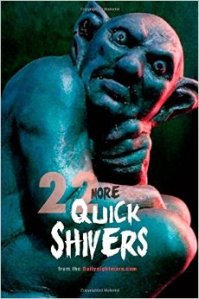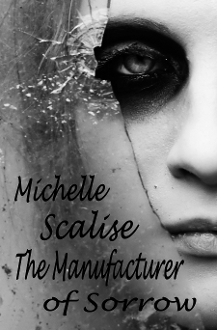 Poetry. By three of my favorite modern poets and one new one to get super excited over. There was no way I wasn’t going to buy this collection. Despite my usual attempts at aloofness, expect fanboy squees to follow in abundance.
Poetry. By three of my favorite modern poets and one new one to get super excited over. There was no way I wasn’t going to buy this collection. Despite my usual attempts at aloofness, expect fanboy squees to follow in abundance.
The premise here is fairly simple, each poet attributed an element with poems that tie into that element in some way. This allows for a sense of coherence without limiting the results to the point of monotony.
“You call me mother”
Marge Simon is a perfect choice for Earth. Her poetry’s always well grounded and solid. Deceptively simple to grasp, even as fine grains slide through your grey matter. “The Time Drifter” and “The Astronaut’s Return” show this beautifully. Both seem to be straightforward narrations, one sided conversations, that bookend each other with a simple inversion (“It is death, not life, that has no limits” and “It is life, not death that has no limits”) that ties these two disparate stories together, feeding new meanings and impact into them. Then there is “That Thing You Do: 3005 A.D.”, which seems so archaic in concept, with the washing and preparation of the bride for congress juxtaposed with the futuristic date. It’s soft, sensual, natural, yet is obsessed with deception. And that isn’t going into her marvelous use of rhythm and stanza.
“Drink, and be reborn”
Then comes Rain Graves, whose work I have never read before this but who is described as a meeting point between Lovecraft and Bukowski in the introductory material. Any illusion of the peace and tranquility often associated with water is ruptured and drowned from the start with “The Alligator God and the Sea” awash in violence and rage and utter nihilistic disappointment. I am sure Hemmingway would be happy with the allusion. Her words slip and slither, edging on reason and sitting comfortably on the tongue; full of rich imagery and meaning that slides through grasping fingers. Where Marge’s poetry is easily accessible, Rain takes a bit more work, but it’s well worth the effort. Take this, from “HP Lovecraft, Drinking a Little”: “bleeding to be whole, and imaginary, and culinary and… simply loveable, like wine. We often feel, say the Elder Gods, we are just the cheese they brought, and not at all the good kind” and try not to weep a bit at the loss of importance. She ends it all on a series of poems based around the myths of Hades and those thick, black rivers that flow therein. I may well have a new obsession, here.
“Dancing to music of both screams and birth”
Charlee Jacob. I shouldn’t have to say more than that, should I? But you know I will. Fire blisters, burns and scars the flesh, but sears clean wounds that throb with infection. I can’t think of a better metaphor for her work. There are no words here that do not carry the weight of agony on their shoulders, no stanzas that do not bury you beneath it. There is less sense here, and more rage in these intricate paintings woven of words and emotion; dreams that screech and whine on the stark white of the page. Yet, there is a catharsis and a sense of hope to it all, echoed in the self-determinism of Lucifer (via “Reaching Back to Eden: The Snake”) that “when we die we shall have to rely on our own light, flickering, wan, at tunnel’s end”. I’ve said it before and will continue screaming it from rooftops until you bastards listen: This woman is my shit!
“Sings softly over stony curves”
Rounding us out, we have Linda Addison, a woman who was first brought to my attention by a scraggly post-mortal feline and the grandiose come-on of Dr. Booty. Her poetry can seem random, immensely beautiful but evasive. Words flow and eddy, tear and caress, then flit away into nothing and it all can too easily be dismissed as nonsense. As she states in “Fearless”, “There are no answers in this empty when, just death, ghosts, bleeding songs, one broken moon shape high above, no one to breathe me.” Please note that “seem” from earlier, though. There is meaning here, even if it will not present itself to you. There is sense as well as sensation, but it refuses to sit still. Like Marge’s twinning of the Drifter and the Astronaut, Linda loops the aptly named “Disambiguation” into “Homecoming” into a dance of dissolution and reformation that makes it clear that Addison does not act without purpose. I’ll be puzzling over these poems for quite some time and I love it.
I don’t normally like to give directives, but you should just go ahead and buy this damn book.
Cover art:
I’ve already established my adoration of Daniele Serra’s work. Here, it is the simplicity that makes it work. Those deep, earthy tones with the flow of air and the spatter along with the hair rising in curles of flame. The closed eyes betray a sense of sadness while the single bared breast hints at vulnerability. Its a thing of beauty and grace that fits the collection very well.
reviewed by Anton Cancre


Recent Comments